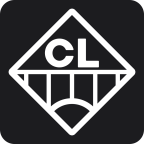Movement optimisation for grids
Kategorie:
Laser
348
1
0
2023-06-20
C
jessie
2023-06-21“traversing the thin lines in multiple vertical passes would result in less overall movement” The notion of “filled” shapes is intended to produce a uniform result over a region, so using it to create thin lines is something of a corner case. “without having to split up the grid into different colors” If it’s a simple rectangular grid, this is trivially easy. Create two Fill layers with identical speed / power values, with one scanning vertically and the other scanning horizontally. Draw a single vertical rectangle of the grid’s height over on the left side and assign it to the “scan vertically” layer. Use the Array tool to duplicate it across the grid’s width. Draw a single horizontal rectangle of the grid’s width along the bottom end of those vertical rectangles and assign it to the “scan horizontally” layer. Use the Array tool to duplicate it along the grid’s height. Fire. The. Laser. Also, if cutting the lines as single vectors, rather than as filled rectangles, would produce a good-enough result, that will go even faster. Set up a layer with the proper Line speed / power. Do the grid thing again, with lines rather than skinny rectangles, and assign both directions to the same layer. Fire. The. Laser. Done! Of course, I’m sure I misunderstand some of the complexities, but maybe that’ll give you some ideas.
0Odpowiedz
Relewantne rekomendacje
-
Can’t choose a Angle for calibrate Lens
1 Odpowiedź2023-08-11 - 2023-09-26
-
sistema allineamento specchi?
2 Odpowiedzi2023-02-20 -
Windows tabs does not show new windows
1 Odpowiedź2023-03-20







